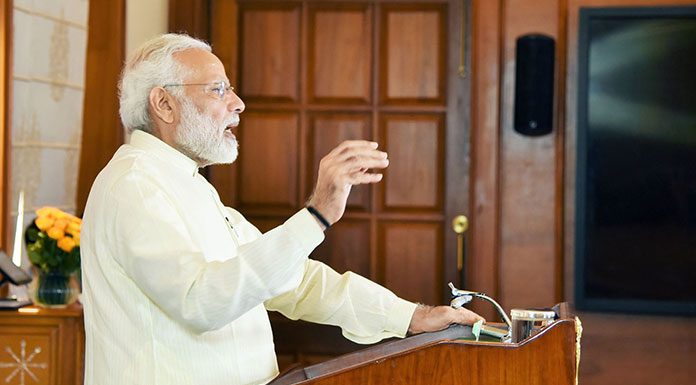On this day, the November 8, 2016, in midnight, Prime Minister Narendra Modi announced his decision to demonetise 87% of Indian currency – Rs 500 and Rs 1000 notes – which were in circulation. In his “Tryst with Destiny” (type) speech PM Modi claimed that it was done to break the grip of corruption and black money but after year of that exercise of demonetisation, reports after reports suggest that it was nothing but a political gimmick aimed at Uttar Pradesh Assembly election which BJP won with a thumping majority.
“Brothers and sisters, to break the grip of corruption and black money, we have decided that the 500 rupee and 1,000 rupee currency notes presently in use will no longer be legal tender from midnight tonight, that is 8th November 2016,” said PM Modi in a televised address to the nation.
We look at the few reasons why demonetisation failed and why Prime Minister Narendra Modi should have avoided this biggest blunder or what actions could have yielded desired results?
Real Black Money lies in offshore accounts, gold and jewellery, go there
Demonetisation made 87% of Indian currency useless in one brush of decision but perhaps PM Modi failed to acknowledge multiple reports from research firms which say that the money on which income taxes are not paid is usually kept out of the reach of the nation's financial system. Mostly people invest in property, gold and jewellery and illicitly exported overseas, and just 4-6 per cent is held in cash but PM Modi is yet to take any credible action on this.
Black Money are made white by Indian firms via FDI routes, check it
If you carefully analyse the FDI investment data over the last 10 year, it is quite clear that about 50 to 55 per cent is not the real FDI. It is basically money of Indian-owned business which round trip via Tax haven like Mauritius to Indian economy to cheat on taxes liability. But neither PM Modi nor the previous government ever tried to touch or rationalise the treaty with Mauritius government. It is one of the biggest source of black money conversion into white without paying any taxes.
Mungerilal Ke Haseen Sapne: Expecting a third of the notes wouldn't be returned
It is well settled that with demonetisation drive government was expecting a windfall gain. They expected that almost a third of the notes wouldn't be returned and this will realise the government over Rs 4 lakh crores, money that will come handy to recapitalise the PSU banks burdened with NPAs. In fact news outlets like Bloomberg run stories around these hands-out from Modi government but it turns out to be Mungerilal's Dreams.
According to the Reserve Bank annual report, 98.96 per cent of the Rs 500 and Rs 1,000 notes that were invalidated due to the demonetisation exercise have been returned. The estimated value of the banned notes the RBI has “received” is Rs 15.28 lakh crore against the invalidated note value of Rs 15.44 lakh crores due to demonetisation. It means only Rs 16000 crore could not return. The cost of printing of the new notes even exceeds the returned amount, clearly indicating that demonetisation even failed on economic parameters.
Demonetisation: SMBs, Trades, Daily Wagers, Labours still suffering
According to government data, India has a workforce of close to 450 million. Of these, only seven per cent are in the organised sector. Out of these 31.5 million, about 24 million are employed by the state or state-owned enterprises, the rest being in private sector employment. Of this vast reservoir of over 415 million employed in the unorganised sector, about half are engaged in the farm sector, another 10 per cent each in construction, small-scale manufacture and retail. These are mostly daily wage workers and mostly earning less than the officially-decreed minimum wages. The economy may not have ground to a complete halt, but in hundreds of million homes the cooking fires were not being lit in the immediate aftermath of demonetisation. In fact, many factory owners could not pay the wages for months. Frustrated with big queue and non-availability of cash, majority of labourers left for their home-town.
Cash is still the king, digital – “Door Ast”
As government forced limited access to cash during demonetisation people were bound to use digital payment like net banking, card payments and mobile wallets. Companies like Paytm, MobiKwik among others made most of the demonetisation, their transaction soured like a huge bull run but they suddenly went down as demonetisation ended.
According to reports, there is very little evidence to suggest any behavioural change because of demonetisation. The spike in digital payments and the decline in ATM withdrawals were both caused by artificial constraints, and do not seem to have had a lasting impact on Indian citizens, as cash is back.







